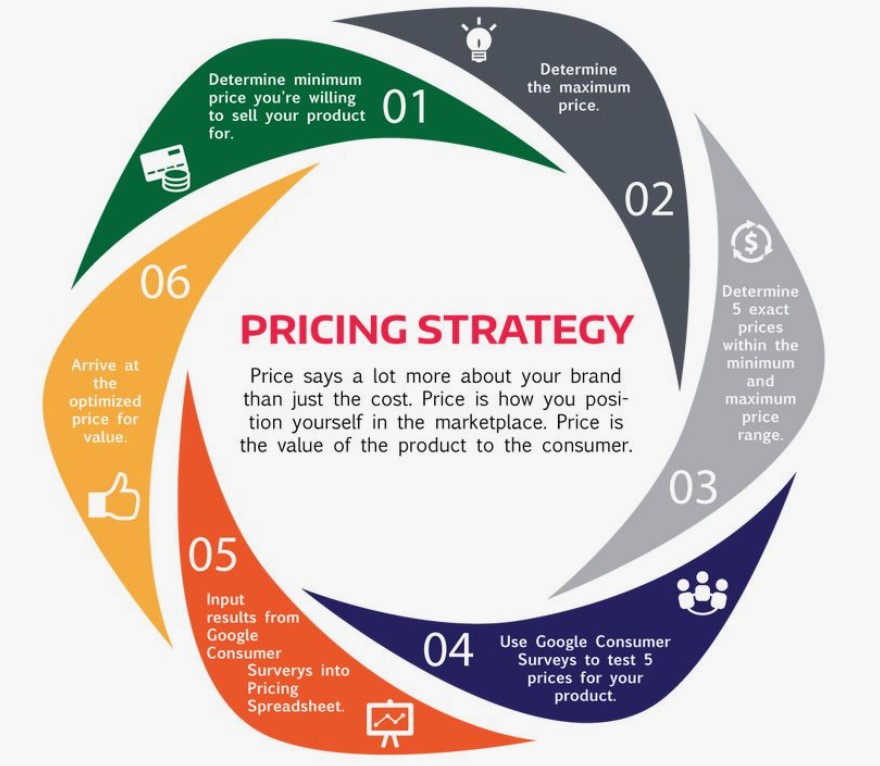A few years ago, I would never have imagined that my passion for making things with my own hands could become a solid source of income. I like to do everything with my own hands — crocheting at night, decorating plates on weekends, and occasionally even candle making for leisure.
It never occurred to me until that moment that my passion could be a source of income. I started reading about selling my handmade work on the internet, from articles, YouTube videos, and sites such as Etsy and Instagram.
I soon realized that selling handmade items through the internet is not such a bad idea, so that wasn’t so bad after all.
If you’re reading this, you’re probably like me — right now — excited, excited, and eager to leap from hobbyist to internet entrepreneur.
Key Takeaways
1. You don’t need a perfect setup — just a few quality products and the courage to get started.
2. Find a balance between your passion and what buyers are searching for online.
3. Good presentation builds trust and helps your products stand out in a crowded marketplace.
4. Use Etsy, Shopify, and social media like Instagram or Pinterest to reach more customers.
5. Post regularly, engage with your audience, and keep improving to build a loyal customer base.
In this blog, I’ll share every step I took to build my craft business from scratch. Hopefully, my story and tips will help guide yours.
Step 1: Deciding What to Sell – Finding Your Crafting Niche

The first and most important decision you’ll make is what kind of crafts you want to sell. I first tried to sell a limited supply of everything: keychains, jewelry, coasters, and macramé plant holders.
But I realized soon that I was everywhere all at once, which was causing burnout. So I took a step back and truthfully said to myself, “What am I enjoying most? What am I most talented at?” What excites people?”
It was that self-reflection that led me to my niche. For me, my niche was home decor with a nature theme, specifically macramé and eco-friendly candles.
That was my niche, and from there, everything else came more naturally — branding, product development, even targeting my audience.
Think about your personal strengths, your flair, and current trends when deciding your niche. Do some market research on platforms like Etsy, Pinterest, and TikTok.
Look for products with high demand but low saturation. You are looking at something that people are going to buy, but yours will be a personal variation. This balance of personal interest against market demand becomes the foundation of a thriving enterprise.
Step 2: Mastering Your Craft – Quality Always Wins

Prior to listing anything for sale on the internet, I knew I had to fine-tune my products. You only have one initial impression with customers, and internet shoppers are basing your product on pictures, words, and reviews to determine if your item is worth spending their money on. If they get something rotten, chances are they won’t come back — or worse, they will leave a negative review.
So I honed my process and took time to practice. I tested various materials, new methods, even gave pieces away to friends and family to see how other individuals received them.
For every piece I sold, I desired for it to be something I was comfortable giving away. I sought to make a point that every piece was always of fine quality — durable, clean, beautiful, and put together with care.
Remember, your name is behind everything that you sell. So, a bracelet, a candle, a painting on a sign, be sure these are your best. Quality stands out in a sea of cheap, mass-produced everything – handmade perfection speaks for itself.
Step 3: Building a Brand That Feels Like You

Creating a brand identity is more than generating a name and giving your page a logo. Your brand is your story, your environment, your promise to your clients.
It must be a reflection of your own character and the kind of experience that you hope that your buyers are going to have.
While brainstorming names, I was searching for something earthy, calming, and memorable. I finally settled on “Earth and Thread,” and that was an eureka moment. I now had a name that I could use consistently on my packaging, social media, and site. It gave me direction.
Once I settled on a name, I came up with a logo that was simple but elegant through Canva. I chose colors that went well with my produce’s natural colors—soft greens, browns, and ivory—and used them consistently on my packaging, pictures, and site. It all started to feel like a complete entity.
If starting a new brand, don’t concern yourself with having everything perfect beginning day one. Just create something that inherently feels real. Ask yourself why your craft is different, and mirror that through name, color, tone, and customer experience.
Step 4: The Power of Great Product Photos

Because you sell online, your buyers can’t touch, feel, or see your item. All they get to judge from your images. That’s why effective product photography is so vital—it’s your virtual handshake, your virtual storefront, your first introduction.
I didn’t have a professional camera or a studio then used my smartphone and took the pictures against a brightly lit window.
I got a piece of white foam board from a local stationery store and used that as a clean background and even added some props—plants, books, wooden trays—to give my photos a lifestyle feel.
For each product I created, I list:
A clean hero shot
Close-up detail photos
A photo that shows scale (like holding it in your hand)
A lifestyle shot (like a candle on a shelf)
I even utilized apps such as Snapseed and Lightroom Mobile to tweak brightness and contrast. Nothing overly special, just enough to make the colors pop and the photo appear professional. Do not undervalue this step—it may be the push that gets a person to click “Add to Cart” or keeps them moving along.
Step 5: How to Price Your Crafts (Without Selling Yourself Short)

I’ll be honest – the prices frighten me. I was afraid at first to sell my goods for what they are worth. I thought that if the price was too high, customers would not purchase then realized soon that low prices trigger burnout. You’ll be working more than ever for less than a minimum wage.
Eventually, I developed a formula that worked for me:
Material Costs + Time (hourly rate) + Overhead (tools, packaging, platform fees) + Profit = Retail Price
This kept me profitable but competitive. I took a look at other similar sellers too and priced off of that. Keep in mind, your time and creativity are worth money. Don’t feel bad charging for your work.
Also, consider offering bundles or seasonal discounts to attract buyers without having to lower your prices. A well-thought-out pricing strategy can keep your business sustainable in the long run.
Step 6: Exploring the Best Ways to Selling Crafts Online
I was ready to begin selling and was thinking: “Where can I sell my products?” You can sell your handmade goods on various websites, and each site has some benefit to it. I tried a few of them before I knew which ones were best for me.
Etsy – My First and Favorite Platform

Etsy is where I got my start, and I still love it. It’s designed for handmade and vintage items, and buyers come there hoping to find unique, artisanal products.
Pros:
- Built-in customer base
- Easy to set up
- SEO tools built-in
Cons:
- Fees on each sale
- High competition
I optimized my listings with keywords like “handmade soy candle gift set” and used strong tags to help my products show up in search.
Shopify – For More Professional Sellers

Once I was getting regular orders, I opened a Shopify site so I could create a more personalized shopping experience. Since I now had my own site, I was able to design a custom layout, capture emails, and be entirely in control of branding.
Pros:
- Custom domain
- Control over design
- Integrated tools (email, analytics)
Cons:
- Monthly fees
- Requires more setup
Instagram & Facebook – Free and Personal
Social media became a big part of my marketing. I posted regularly on Instagram, shared behind-the-scenes stories, and engaged with customers. Facebook Marketplace also helped me gain local buyers.
The key is consistency and community — talk to your audience, not just to them.
Other Options:
- Amazon Handmade (high reach, high standards)
- Your Own Website (long-term strategy with full control)
- Local craft fairs + online promotion (great for building relationships)
Step 7: Attracting Customers and Making Sales
Setting up your store is just the beginning. Now comes the hustle—getting people to actually find and buy your products.
Search Engine Optimization (SEO)

SEO felt overwhelming at first, but once I understood it, I saw results. On Etsy and my blog, I used search terms that my ideal customers would use — things like:
- “Boho home décor handmade”
- “Eco-friendly candles gift set”
- “Custom macrame wall art”
I used tools like Semrush, E-Rank, and even Google Trends to figure out which phrases were worth targeting.
Email Marketing

Once I got my site up, I started accumulating e-mails through a 10% discount deal for newcomers. I continued with newsletters for new arrivals, craft fairs, gift guides, and behind-the-scenes articles. This created repeat business through loyalty.
Pinterest and TikTok
Pinterest brought in a lot of traffic, especially during the holidays. I created pins that linked to my Etsy listings and blog posts. TikTok, on the other hand, allowed me to share crafting videos, packaging clips, and even time-lapse product creations.
Step 8: Handling Orders, Packaging, and Shipping

Order fulfillment is where magic meets logistics. I implemented my rule of treating every order like a special gift and used environment-friendly boxes, tissue papers, company stickers, and handwritten personal thank-you cards. I even sprayed the packaging with a tiny lavender scent – that became my brand.
That depends on where you are, but my advice would be to use shipping apps like PirateShip or Shippo to compare shipping prices and save money.
I always track and inform customers. Smooth, thoughtful delivery goes a long way to turn a one-time buyer into a repeat buyer.
Step 9: Growing and Scaling Your Craft Business

Once I was consistently selling and was happy with my shop, I knew I could expand. Internet selling isn’t necessarily about selling one piece of something or even one website – there are ways to grow a business sustainably, slowly, and that was something I was looking to do.
✨ Expanding My Product Line
I started by listening closely to my customers. They would leave reviews saying, “I wish this candle came in a larger size,” or “It would look amazing hanging on the wall in a set.” I took those comments seriously. Instead of guessing what would sell, I let my customers guide me.
I added variety, bundled sets of products for gifts, and limited collections for the holidays. This was able to increase my order value average and give my loyal customers more variety. If one of your products is selling well, think of a way that you can expand that idea through size, style, color, or even accessory items.
🌎 Reaching a Bigger Audience
Once I perfected my product line, I focused on targeting a broad audience. That meant improving my SEO, writing blog posts about my products (like “The Best Handmade Gifts for Nature Enthusiasts”), and working with influencers involved with the handmade market and home decorating.
I even joined internet craft forums and communities – not just for promotions, but for connection. Networking via these platforms earned me features, shoutouts, and the occasional collaborations that I never could have predicted. Growth can occur through networks, not just from promotions.
📦 Streamlining My Operations
With increasing orders, I was able to spend more time packaging, labeling, and shipping. I knew I was going to have to be more productive if I was going to continue growing without burning out.
I upgraded my equipment—such as a thermal label maker, bulk packaging, and inventory management shelving units.
I even established a “shipping station” in a corner of my home that was stocked with everything I needed. It shaved my turnaround time in half.
If you’re serious about growing, invest the time to get your workspace organized and your procedures streamlined—it saves you energy and lets you spend more time being creative.
💼 Thinking Like a Business Owner
Along the way, I stopped thinking of my shop as a small business and came to see it as a business. I set monthly sales objectives, watched my expenses and revenues, even went so far as to explore outsourcing some operations like bookkeeping or even photography of my products so I could spend more time writing.
This shift in mindset was key. I still craft with love and intention, but I plan, forecast, and treat every decision like a business move.
If you want to turn your craft into a long-term source of income, this chapter is where the real transformation begins.
Step 10: Customer Service and Reviews
Good customer service means repeat customers.
What I focus on:
- Fast, friendly responses
- Clear return/refund policy.
- Follow-up emails to review
📢 Reviews are gold. I happily ask buyers to review the photo — it builds trust for future customers.
What I Wish I Knew Before I Started
Let me share a few things that could save you time, money, and stress:
- Start with what you have — don’t invest too much too soon.
- Focus on one or two sales channels first.
- Test and tweak your listings often.
- Don’t take slow sales personally — it’s a learning curve.
- Community support is powerful — join online crafter groups.
Final Thoughts: You Can Absolutely Do This
Selling crafts online has changed my life. It started with curiosity and creativity, but with persistence, patience, and heart, it has grown into a real business. I have shipped to customers all over the country, connected with incredible people, and created something that brings me joy every single day.
If you are passionate about making things, there is a place for you online. Don’t let fear, tech, or imposter syndrome hold you back. Start small. Learn as you go. Celebrate every sale – because each one is proof that your work matters.
You’ve got this. 💛
Also Read:
Make Money with Virtual Assistant Jobs
Make Money from Household Chores
Frequently Asked Questions (FAQs)
1. What is the best platform to start selling crafts online?
The best platform depends on your goals and experience. For beginners, Etsy is highly recommended because it’s easy to set up and attracts millions of buyers looking specifically for handmade products. If you want complete control over your branding and customer experience, you can build your own Shopify website. You can also sell through Instagram, Facebook Marketplace, or apply to Amazon Handmade once you’ve established yourself.
2. Do I need a business license to sell crafts online?
This depends on your country and local laws. In many places, if you are running a craft shop as a side hustle and only making a small amount of money, you may not need a license right away. However, if you start earning regular income, you may need to register your business, collect sales tax, or report income for tax purposes. Always check with your local government or tax advisor for accurate legal advice.
3. How do I price handmade crafts to make a profit?
Use a basic pricing formula like this:
(Cost of materials + labor hours × hourly rate) + overhead + profit = final price
Be sure to include things like packaging, shipping supplies, platform fees, and your time. Don’t undervalue your work — your skills and creativity are valuable. It’s okay to experiment and adjust prices over time.
4. Do handmade items really sell online?
Yes, absolutely! There is a huge market for handmade, personalized, and one-of-a-kind products. In fact, many consumers prefer to buy crafts online because they feel more meaningful and thoughtful than mass-produced goods. The key to success is to offer quality items, take great photos, write clear descriptions, and consistently market them.
5. What are the most profitable crafts to sell online?
The most profitable and popular crafts include:
- Handmade jewelry
- Custom candles and soaps
- Resin art and keychains
- Digital downloads (like art prints or planners)
- Personalized gifts
- Crocheted or knitted items
- Home decor (like macramé or wall hangings)
Profits depend on your costs, pricing, and how you market your products.
